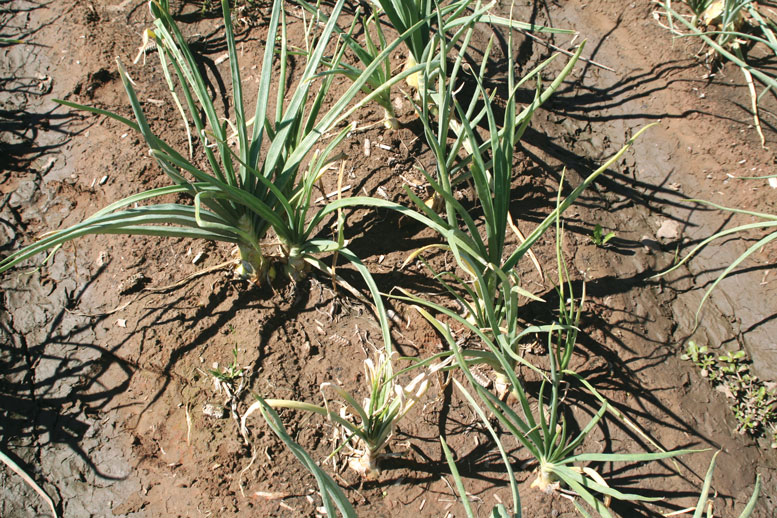The onion is infected with the fungus Phoma terrestris, and the common name for the disease is pink root. This fungus is a soil-borne pathogen that can reside in the soil for long periods of time and only affects the roots. It is a weak pathogen on most plant species but is more aggressive on onion and can cause significant losses.
Infected roots turn yellow, then pinkish, and can become dark purple as they disintegrate (Photo A). New roots that form after infection are short lived. Infected plants are small, drought stressed and display symptoms of nutrient stress due to the destruction of root tissues needed for absorption of minerals (Photo B). Plants that are infected at the seedling stage may die, while surviving plants are too stunted to be marketable.
The best way to manage the disease is the use of resistant varieties in fields with a known history of pink root problems. However, resistance can vary based on the strain of Phoma terrestris present in a field. Local seed providers may recommend varieties that work best in your area. Another option is to use chloropicrin or metam sodium to fumigate the soil, which can limit yield losses; however, this option is not always cost effective. A three- to six-year rotation with a nonhost crop can keep the incidence of pink root low.


